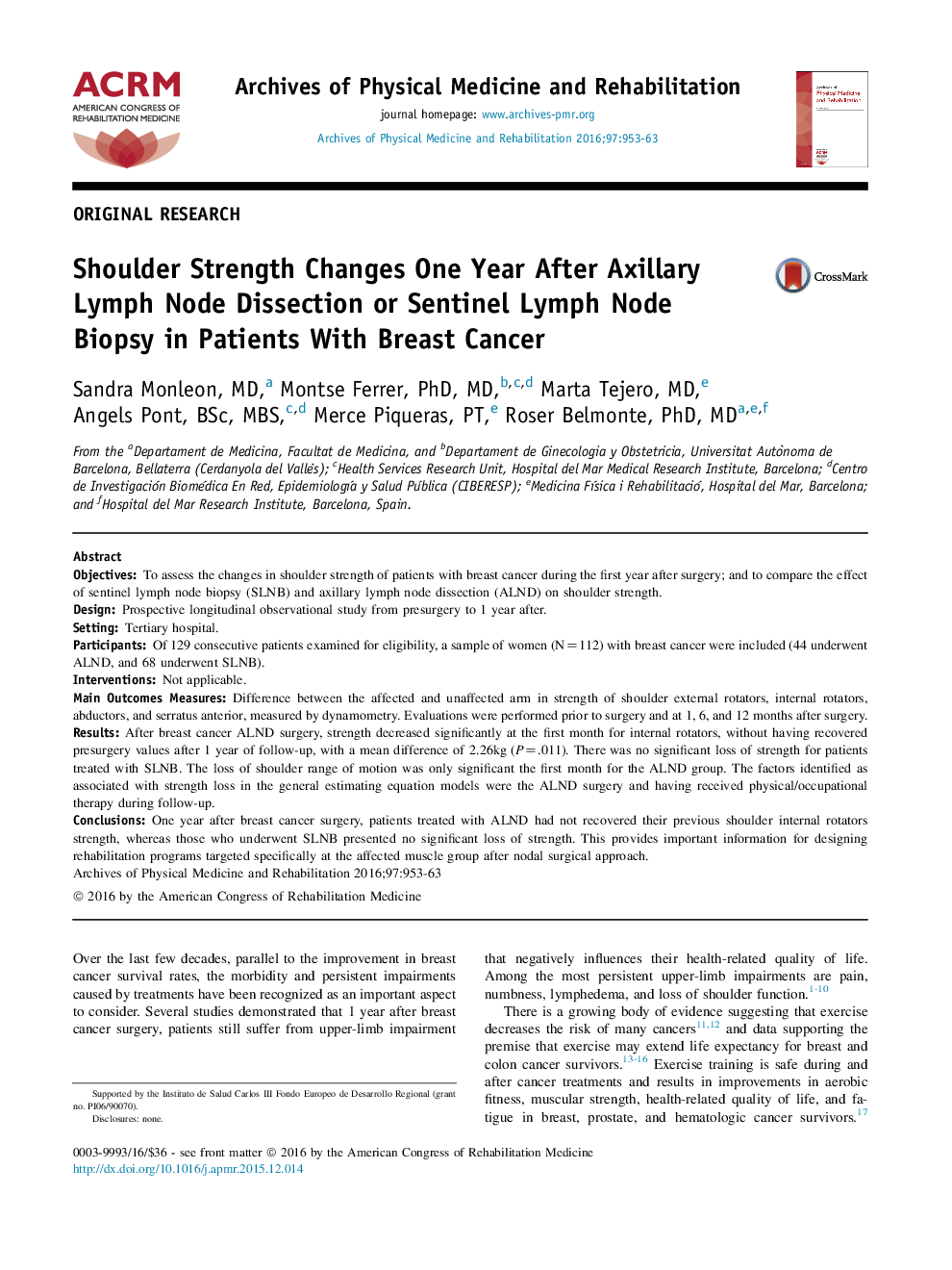| Article ID | Journal | Published Year | Pages | File Type |
|---|---|---|---|---|
| 3447896 | Archives of Physical Medicine and Rehabilitation | 2016 | 11 Pages |
ObjectivesTo assess the changes in shoulder strength of patients with breast cancer during the first year after surgery; and to compare the effect of sentinel lymph node biopsy (SLNB) and axillary lymph node dissection (ALND) on shoulder strength.DesignProspective longitudinal observational study from presurgery to 1 year after.SettingTertiary hospital.ParticipantsOf 129 consecutive patients examined for eligibility, a sample of women (N=112) with breast cancer were included (44 underwent ALND, and 68 underwent SLNB).InterventionsNot applicable.Main Outcomes MeasuresDifference between the affected and unaffected arm in strength of shoulder external rotators, internal rotators, abductors, and serratus anterior, measured by dynamometry. Evaluations were performed prior to surgery and at 1, 6, and 12 months after surgery.ResultsAfter breast cancer ALND surgery, strength decreased significantly at the first month for internal rotators, without having recovered presurgery values after 1 year of follow-up, with a mean difference of 2.26kg (P=.011). There was no significant loss of strength for patients treated with SLNB. The loss of shoulder range of motion was only significant the first month for the ALND group. The factors identified as associated with strength loss in the general estimating equation models were the ALND surgery and having received physical/occupational therapy during follow-up.ConclusionsOne year after breast cancer surgery, patients treated with ALND had not recovered their previous shoulder internal rotators strength, whereas those who underwent SLNB presented no significant loss of strength. This provides important information for designing rehabilitation programs targeted specifically at the affected muscle group after nodal surgical approach.
